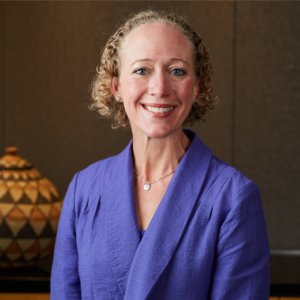Strange bedfellows: The improbable romance of accounting and nursing, part I
It is odd to think that a profession born from the power of compassion and concern could join hands with an occupation filled with number crunching and the bottom line. But, like many love stories, there is often no explanation for the chemistry.
There are few nursing homes that really understand and reap the rewards that a thoughtful accounting firm can have on a nursing facility. Many nursing homes use such firms on a monthly basis to close the books and create the spreadsheets that identify operating and other costs. Clearly, this is an important function of an accounting firm. But, it is only the beginning. An accounting firm that has already taken the time to understand the day-to-day workings of a nursing home can then offer guidance and analysis in the many other facility operations that take place on a daily basis. We are not suggesting that accountants can or should run nursing homes, but it is prudent for all nursing facility administrators and department heads to understand the monetary impact of their decisions and to be able to discuss creative, cost-effective alternatives for achieving positive outcomes. Making use of an accounting firm’s overall financial acumen is a simple way to accomplish this. Look for an accounting firm that has some background in healthcare and lots of experience with operational reviews. The Internet is a great resource to find these types of accountants, or consult your state association for a referral to a firm that specializes in operational studies.
There are skeptics who insist that increasing the profitability of a nursing home inevitably reduces the quality of care given to the residents. This does not have to be the case. In fact, there are nursing homes that provide exceptional care to residents and still remain extremely profitable facilities.
Building a Partnership
So, what is the secret? It is all about creating a bond between care and cost; it is making sure every decision-making team member thinks about the bigger picture; it is knowing what decisions will lead to which outcomes; it is about sharing financial knowledge and responsibility. Facilities can earn more money, not by sacrificing care, but by slashing inefficiencies. This practice may seem obvious, but many facilities still operate without careful consideration of the financial implications of their procedures. For instance, in an informal meeting with the director of nursing and director of admissions, an involved accountant will discuss the admissions process and how the facility should consider cost and staffing concerns when making admission decisions. Facilities that can approximate the additional costs related to tracheostomy care, extensive wound care, and numerous other factors will be better prepared to make informed decisions regarding admissions. Sometimes, in a hurried attempt to fill beds, the admissions or nursing departments spend little, if any, time determining if the admission would actually be beneficial for the facility. Some patients with excessive drug costs are discharged from hospitals to nursing homes without so much as a second thought. But such indifference is unwise for a facility that wants to avoid spreading its resources too thinly to adequately address patient needs. There is no handy chart that will easily make sense of the options, yet certain considerations should be addressed when deciding whether to admit a patient. In cases like these, facilities would benefit from the advice of an accountant, an invaluable resource for understanding such dilemmas.
Likewise, facilities that take the time to determine which potential admissions may require increased assistance with care (professional or nonprofessional) are facilities that can consistently offer great care without compromising attention to residents. For example, if an admissions coordinator working with the director of nursing accepted one resident who requires two- and three-person assists with all ADLs, the certified nursing assistants (CNAs) on a unit would likely be able to accommodate them. If, however, six residents required such labor-intensive care, the increased demand on the CNAs would likely compromise the quality of medical attention. The nursing home’s decision to admit a resident is an important one that must be made repeatedly throughout the day. Nursing home employees involved in the admission process must balance the amount of care required and available with the costs associated with each case. It is an astute accounting firm that can assist the facility in creating an individualized game plan for making sense of these important decisions. When these details are thought out in advance, the bottom line improves for both the owner and the residents.
Look for part II of this article on Monday, May 5.
I Advance Senior Care is the industry-leading source for practical, in-depth, business-building, and resident care information for owners, executives, administrators, and directors of nursing at assisted living communities, skilled nursing facilities, post-acute facilities, and continuing care retirement communities. The I Advance Senior Care editorial team and industry experts provide market analysis, strategic direction, policy commentary, clinical best-practices, business management, and technology breakthroughs.
I Advance Senior Care is part of the Institute for the Advancement of Senior Care and published by Plain-English Health Care.
Related Articles
Topics: Articles , Facility management , Finance











